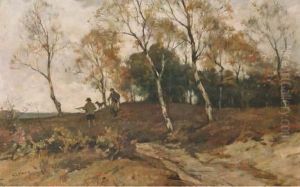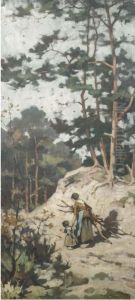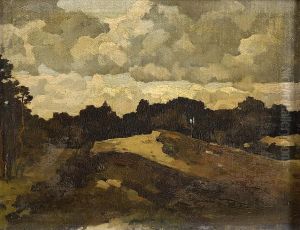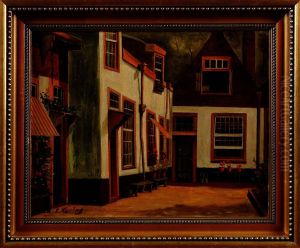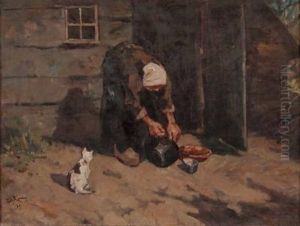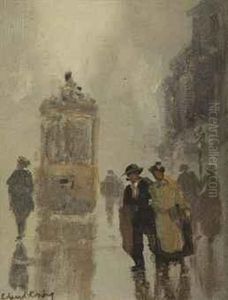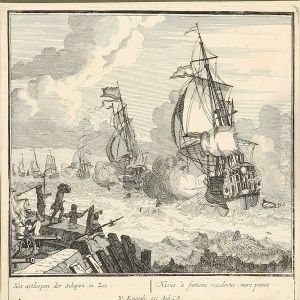Edzard Willem Koning Paintings
Edzard Willem Koning was a Dutch artist, known for his paintings, watercolors, and drawings. Born on April 10, 1869, in Winschoten, Netherlands, Koning grew up in a period that saw the transition from traditional to modern art in Europe. His artistic journey was influenced by the changing art scene of the late 19th and early 20th centuries, which included movements such as Impressionism and Post-Impressionism.
Koning's works often depicted landscapes, still lifes, and portraits. He was particularly recognized for his ability to capture the subtleties of light and color in his landscapes, which often featured scenes from the Dutch countryside. His style can be described as a blend of realism and impressionism, integrating the realistic portrayal of subjects with a sensitive use of light and color that reflected the impressionistic focus on capturing the moment.
Throughout his career, Edzard Koning exhibited his works in various venues, including the Stedelijk Museum in Amsterdam. His contributions to Dutch art were recognized by art critics and collectors alike. Koning’s art also reflects the influence of the Hague School, a group of artists who lived and worked in The Hague during the late 19th century. The Hague School artists were known for their realistic depictions of everyday life and the Dutch landscape, and Koning's work shared the school’s emphasis on naturalism and tonal qualities.
Despite his achievements, Koning did not gain the same level of international fame as some of his contemporaries. However, he remained a respected figure within the Dutch art community throughout his life. Edzard Willem Koning passed away on February 9, 1954, in Blaricum, Netherlands. His artwork continues to be appreciated by art historians and collectors and is part of the cultural heritage of the Netherlands.

